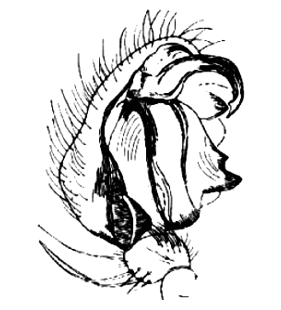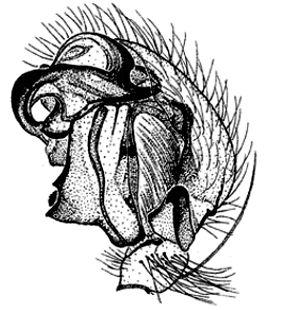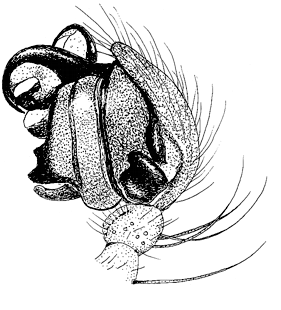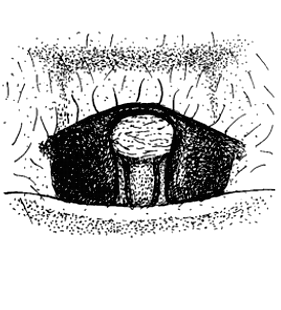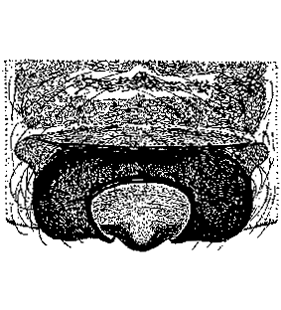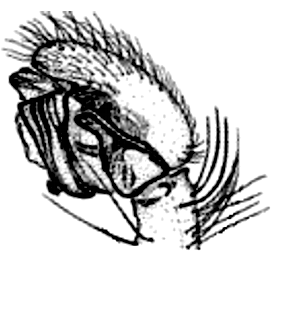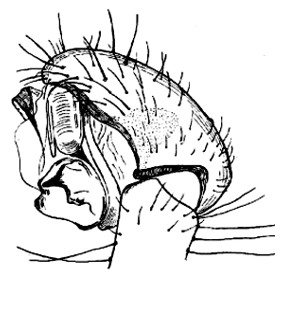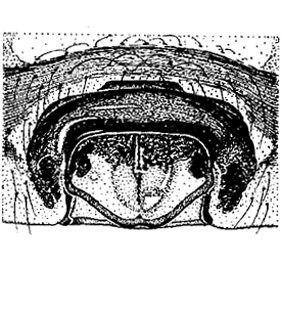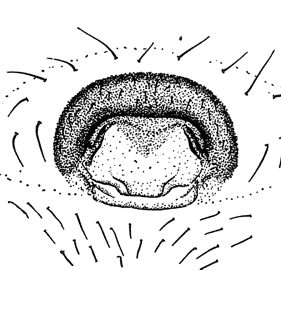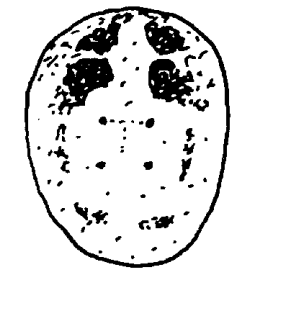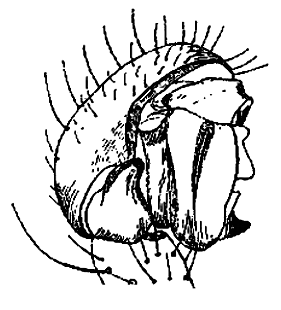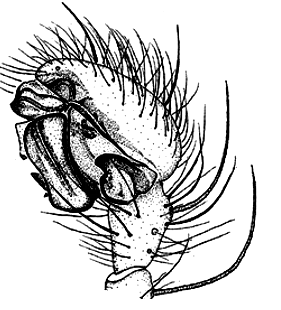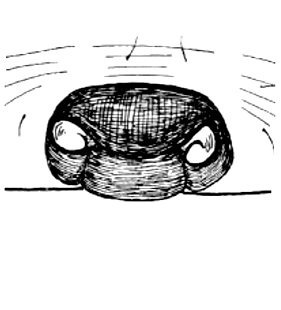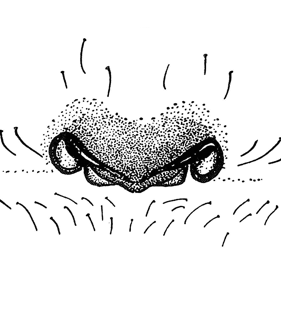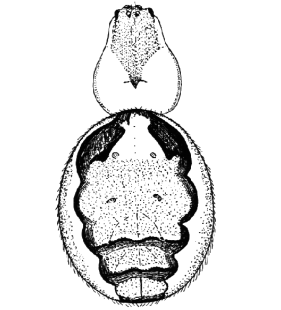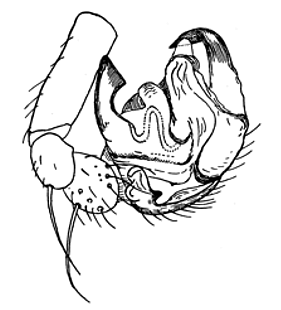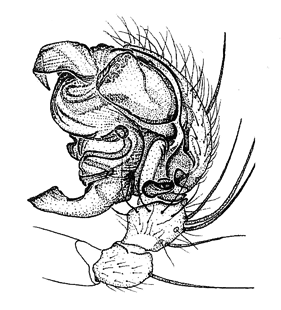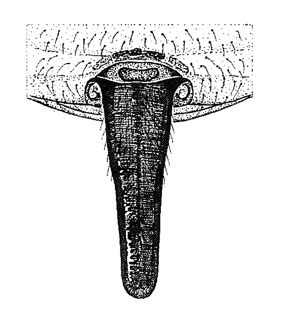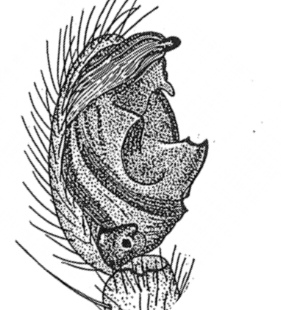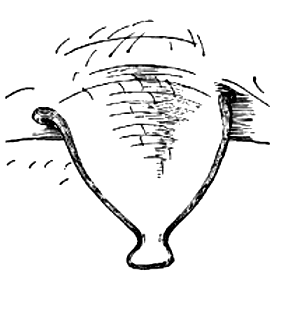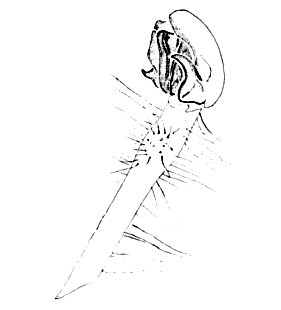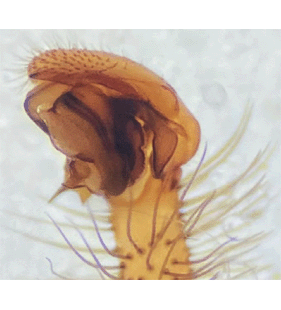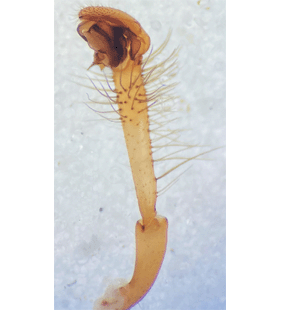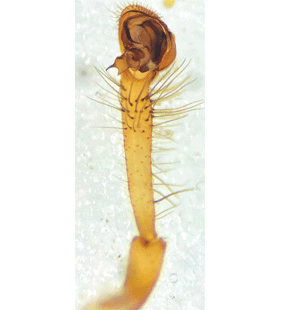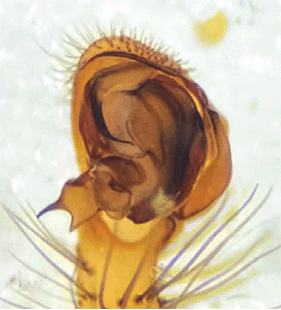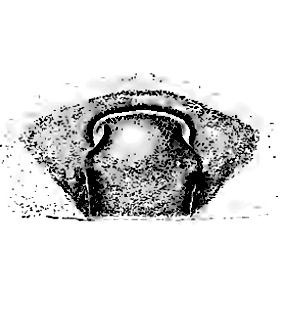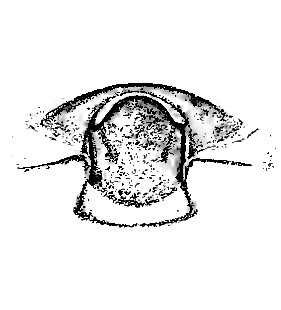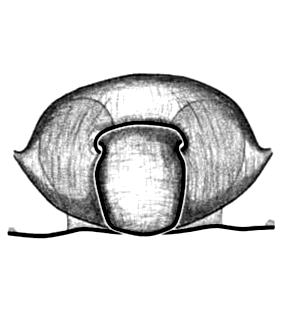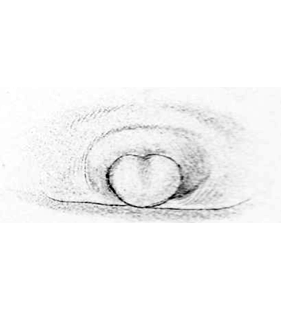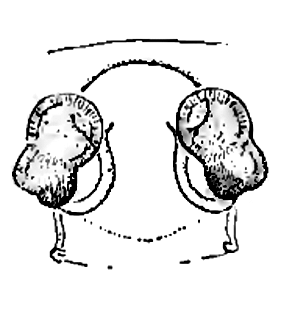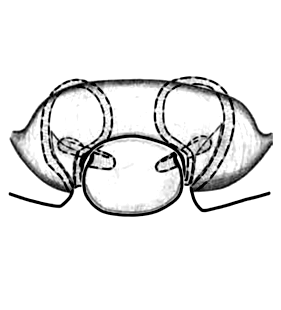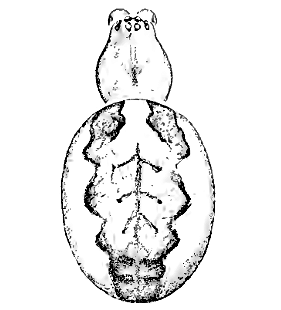Araneidae: Zygiella F. O. Pickard-Cambridge, 1902
Key not complete! Further species listed at the end of key |
In case you find an error or have a specific suggestion, please follow this link: click
|
||||||||||
| 1 |
Paracymbium triangular with distally directed, rounded tip; epigyne bordered by broad chitinous wall | ||||||||||
| - | Paracymbium different; epigyne with scapus | ||||||||||
| 2 (1) |
Bulbus distally with large, hook-shaped apophysis; epigyne greater or equal than 2 times as wide as long Parazygiella montana (C. L. Koch, 1834) |
| |||||||||
| - | Bulbus distally without hook-shaped apophysis; epigyne < 2 times as wide as long | ||||||||||
| 3 (2) |
Tibia of male pedipalp > 4 times as long as wide; epigynal groove clearly visible Zygiella atrica (C. L. Koch, 1845) |
||||||||||
| - | Tibia of male pedipalp only slightly longer than wide; epigynal groove covered by thick chitinous bulges Zygiella x-notata (Clerck, 1757) |
| |||||||||
| 4 (1) |
Paracymbium lobed; bulbus with 2 very large and projecting apophyses; scapus of epigyne ± parallel-sided Leviellus stroemi (Thorell, 1870) |
| |||||||||
| - | Paracymbium broadly truncated distally; bulbal apophyses only slightly projecting; epigyne with broad triangular scapus Leviellus thorelli (Ausserer, 1871) |
|
Further taxa
1. Zygiella keyserlingi (Ausserer, 1871) |

